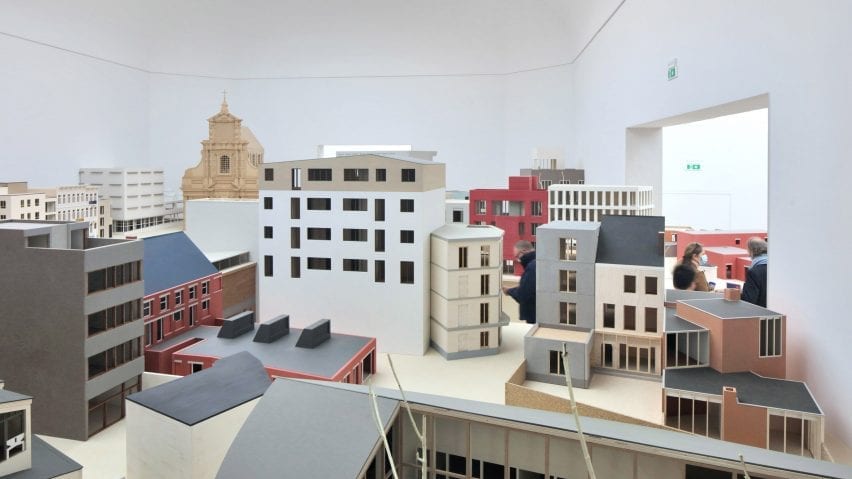
Dirk Somers creates fictional city from fifty recently completed Flemish buildings
Dirk Somers, founder of Antwerp studio Bovenbouw Architectuur, created a "fictional, yet recognisable" Flemish city named Composite Presence for the Belgian Pavilion at this year's Venice Architecture Biennale.
Composite Presence was constructed from 50 models of recent projects in Brussels and Flanders – a region in northern Belgium – that were completed by 45 contemporary architecture studios that are displayed at 7:100 scale.
The models have been placed together in miniature neighbourhoods that visitors to the Venice Architecture Biennale can walk amongst to experience the fantasy city.
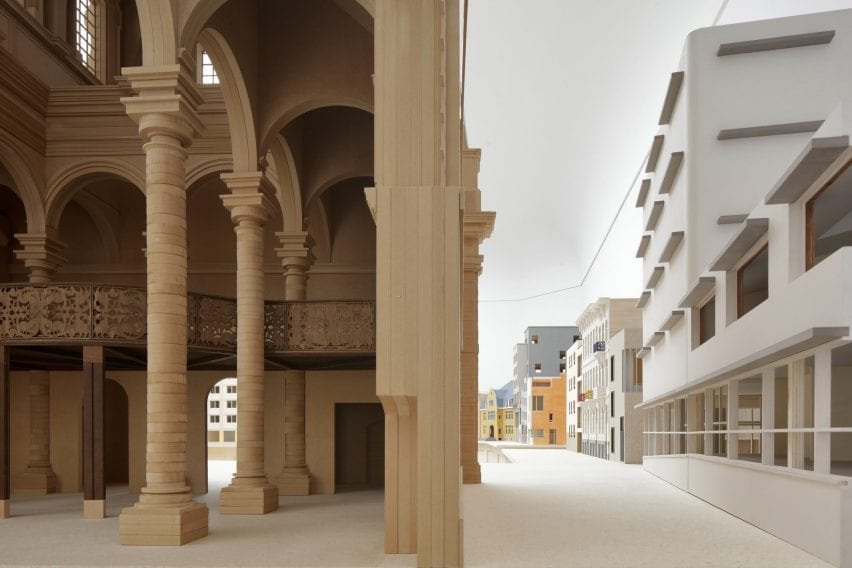
"The scenography explores how architecture steps in those places that grew in a more informal and unintentional manner," Bovenbouw Architectuur founder Somers told Dezeen.
"We explore how architecture can compensate in places where urbanism came a bit too late," he added.
"The selection does not display a top 50. Rather we went looking for projects that stem from the informal and highly mixed cities we know in Flanders."
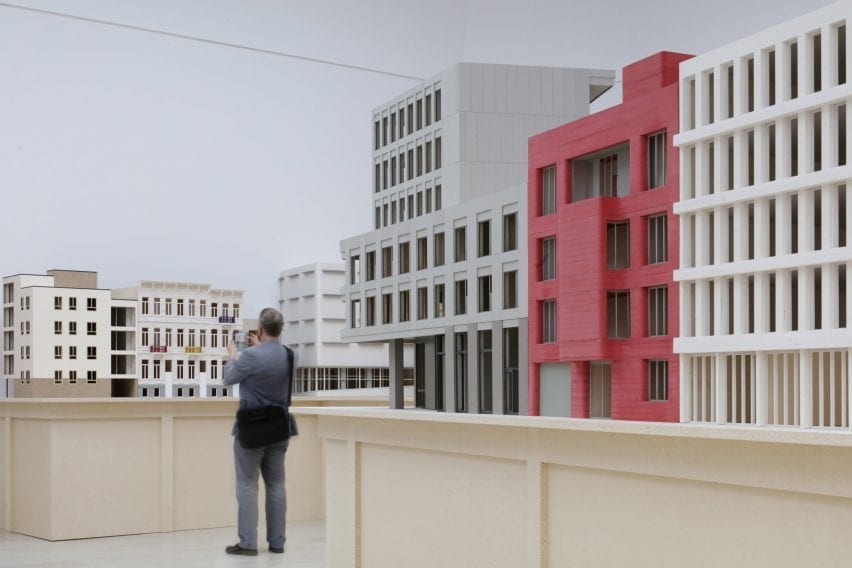
Some of the projects on display are new buildings while others are refurbishments, but all were chosen to represent visual themes that are common in Flanders.
"We call the model landscape a capriccio, after Canaletto's paintings that took buildings from different cities to compose fictional urban scenes," Somers explained.
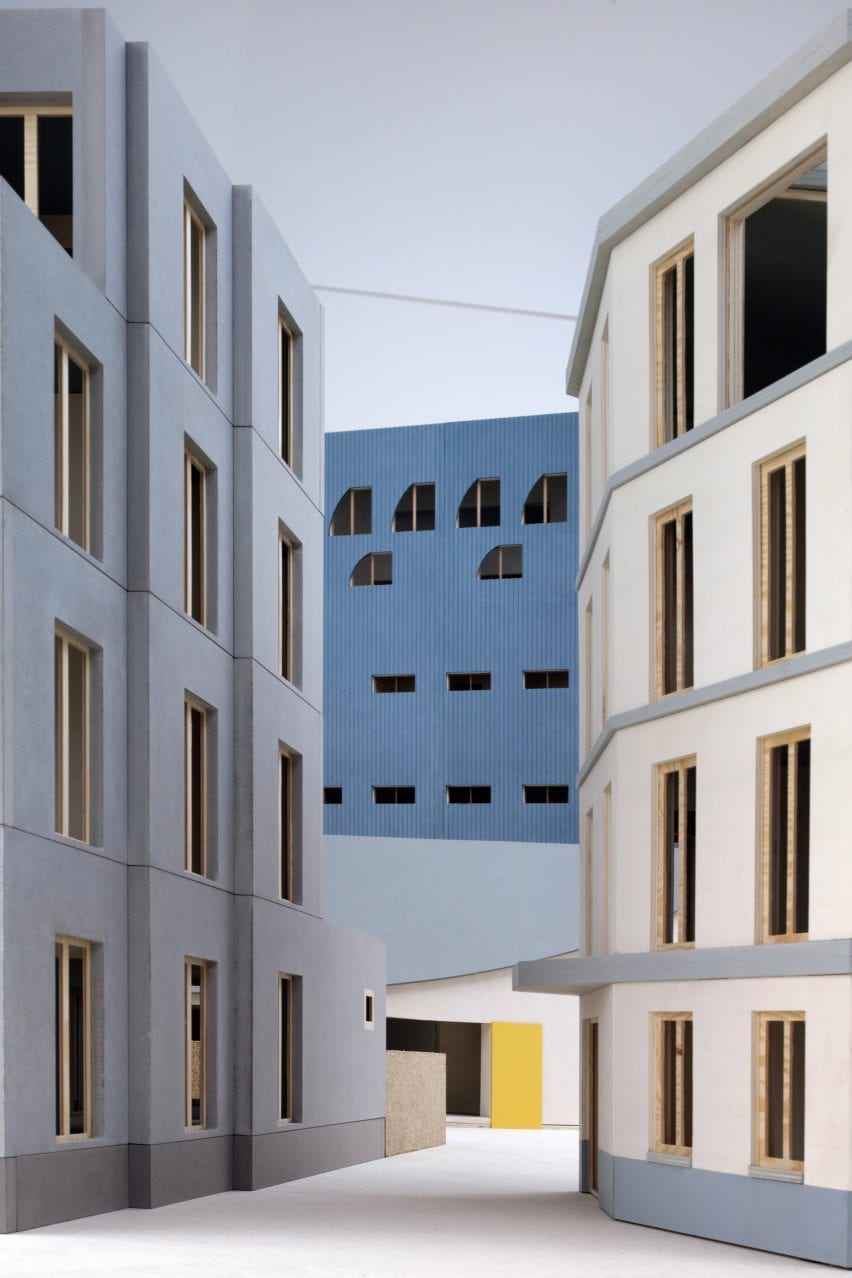
"What you experience is fiction and reality in overlay," he added. "One recognizes visual themes from Belgian cities, but in a way you will never see in reality."
"In Belgium, we struggle with the label 'ugliest country in the world' after a book by modernist Renaat Braem," he continued.
"But in the scenography, we use friction and anomaly to produce a fascinating and pleasurably rich experience."
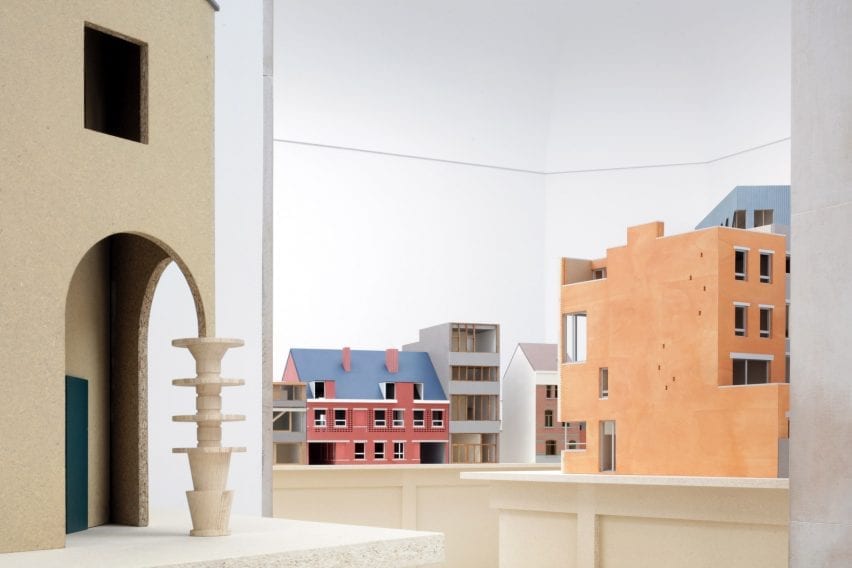
Somers pointed out that the urban design of cities in Flanders has created unique circumstances that in turn have led to innovative designs.
"The weak urban underlay of our cities generate many unusual conditions which these projects use to their benefit," he said.
"We find very narrow, very deep or very shallow plots, we see dramatic scale jumps, kinked building lines, public buildings hidden in the back of a building block, different styles and ideas on architecture next to or on top of each other."
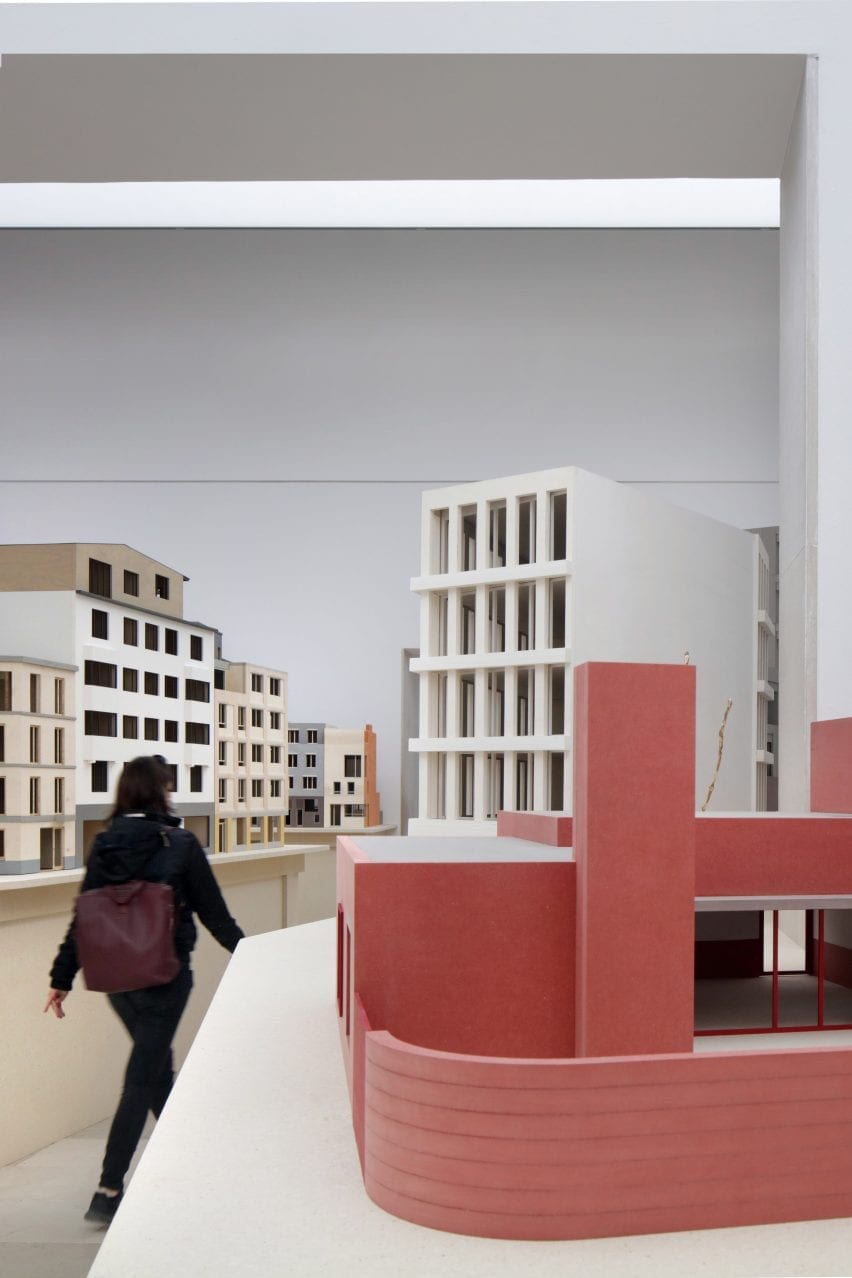
As well as providing visitors with an architectural experience, the Belgian Pavilion also wanted to underline the role that competitions and quality tender procedures play in urban design.
Among the buildings on display a public library by OFFICE, a social housing project by Architectenbureau Bart Dehaene and an organ loft by 360 Architecten.
"We also stress the importance of the middle field in the genesis of architectural quality," Somers said.
"Many of the projects came into being through competitions and quality tender procedures," he added. "City architects and quality chambers play an important role in providing the right opportunities which good designers can plug into."
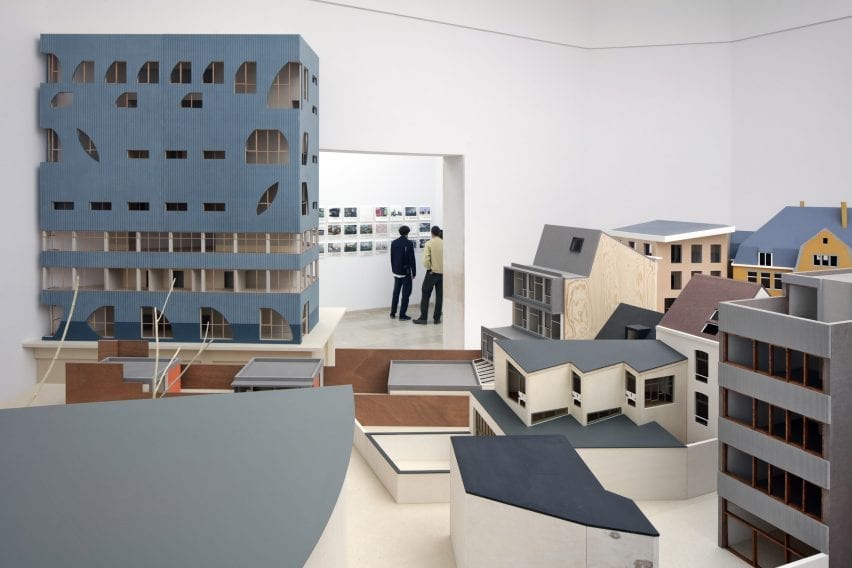
The models were all made by carpenters from processed wood and overseen and completed by Bovenbouw Architectuur between January and June 2020.
"We have used sheet material such as poplar particleboard, spruce plywood and colored MDF," Somers said.
"Materials have been left bare or have been stained, oiled, painted, sanded…to provide a rich experience of textures and colors."
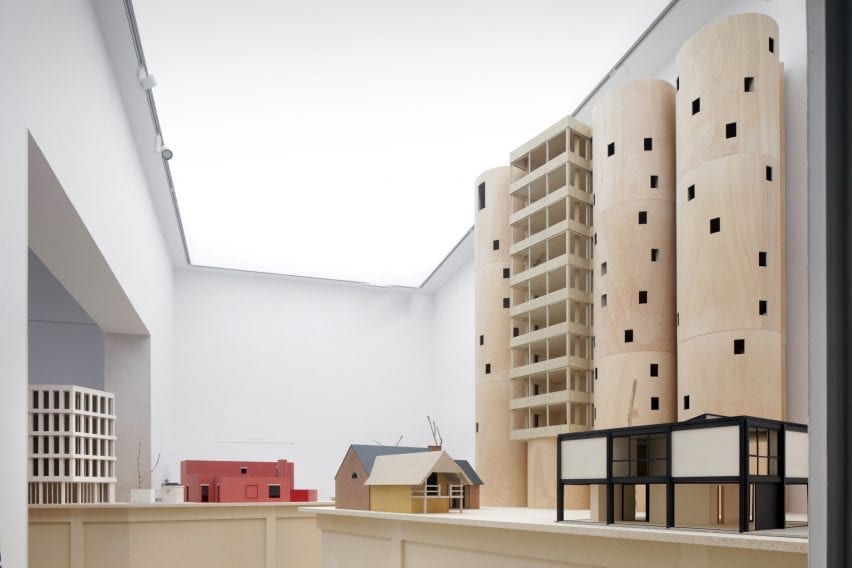
The studio attempted to use FSC and PEFC-certified wood as far as possible, but couldn't guarantee that all of the wood used for construction was, as the models were also made from leftover wood and stock from different carpenters.
In 2022, the exhibition will move to the Z33 art museum in Hasselt, Belgium, after which the models will be given to the participating studios.
Composite Presence was commissioned by the Flanders Architecture Institute (VAi).
Photography is by Filip Dujardin.
Composite Presence is on display at the Belgian Pavilion in the Giardini as part of the Venice Architecture Biennale, which takes place from 22 May to 21 November 2021. See Dezeen Events Guide for all the latest information you need to know to attend the event, as well as a list of other architecture and design events taking place around the world.